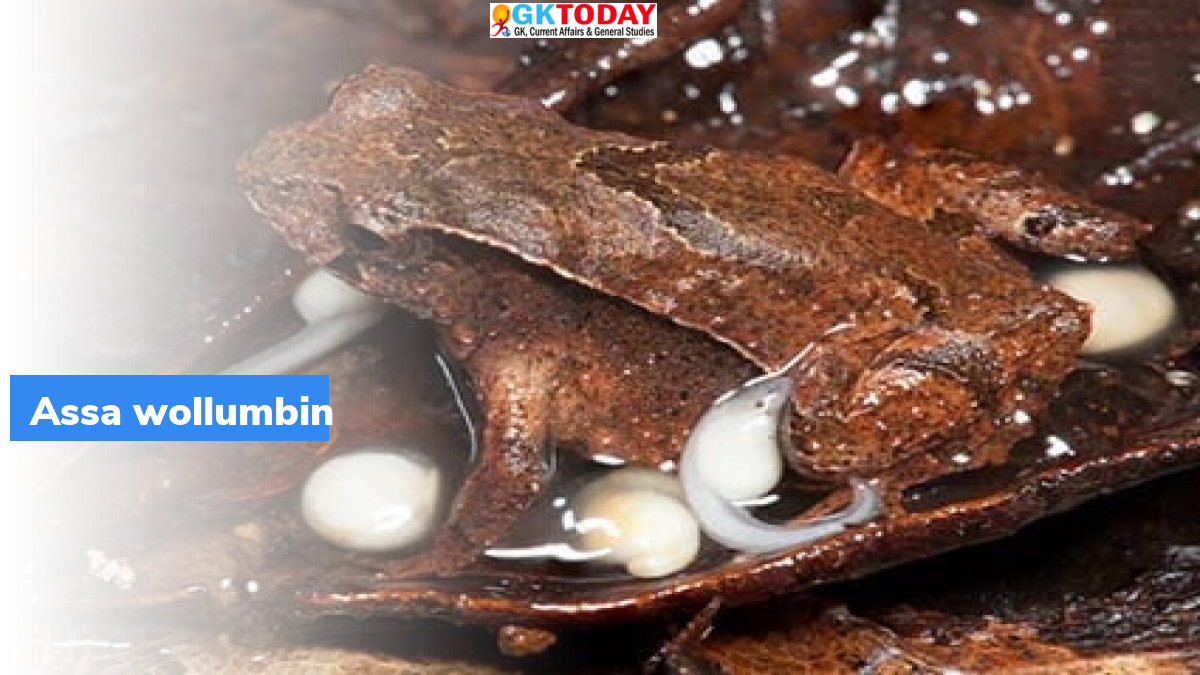Assa wollumbin
Assa wollumbin is a frog. It was discovered in November 2021. These frogs are commonly called as pouched frogs or marsupial frogs or hip pocket frogs. It is a male parental care species. That is, the young ones are taken care by the male frogs and not females. Only four of the 4,000 frog species have male parental care. Here the males carry the developing tadpoles in their pouches.
About Assa wollumbin
- The new species of frog, Assa wollumbin is two centimetres in length.
- The colour of the frog varies from light cream, different shades of brown and brownish orange.
- It has a darker V shaped marking on the back. The marking is located between the eyes.
- The fingers and toes of the species are unwebbed.
- They have small toe pads.
- Earlier, this species of frog was believed to be Assa darlingtonia, a pouched frog. Only in November 2021, it was classified as a separate species.
- The population of Assa wollumbin is confined to only 2,000 hectares in Wollumbin mountains. The Wollumbin mountain is located in a warm subtropical rainforest in the state of New South Wales (Australia). The mountain is a holy place to several aboriginal communities. It is a place of traditional and cultural significance to the Bundjalung people.
- The species meets the state criteria to be declared as “critically endangered”.
- As the population of the frog is very less, it is highly vulnerable to climate change.
Peculiar Breeding Biology of Assa wollumbin
The male and female Assa wollumbin mate under leaf litter or under large stones in the forest floors. During mating, the female lays few large eggs. These eggs are deposited in the ground. The male frogs then stay with the eggs. It takes around seven days for the eggs to hatch. When the eggs are ready to hatch, the male frogs position themselves on the top of the eggs. After the eggs hatch, the males carry the tadpoles in their pouches. The young ones develop in these pouches. Within the breeding season, the males may mate more than once and can carry more than one young ones in different developmental stages.


